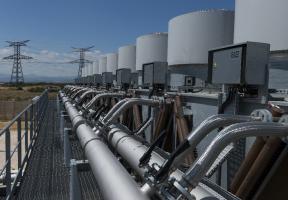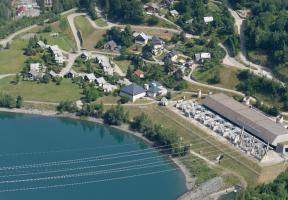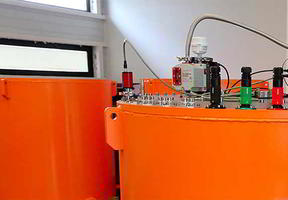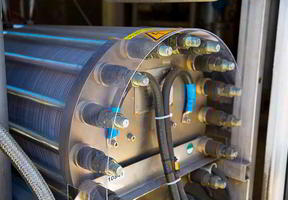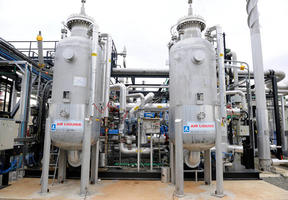Electricity Self-Consumption, an Increasingly Popular Model
10 min read
Technological advances are now making it possible to generate locally and in controlled amounts. Within the sector, solar photovoltaic (PV) technology is particularly well suited for this purpose, as panels installed on rooftops can directly supply households, businesses, farms and factories. The power generated from these individual units can then be sold or self-consumed. However, the cost-effectiveness of self-consumption systems, which are expensive at the outset, is still far from guaranteed, particularly for individual consumers.

© PASCAL GUYOT / AFP - Parking lots sometimes have canopies with solar PV panels, which enable electricity to be generated on-site. This photo shows a supermarket in the south of France.
Total Sale
When solar panels began to spring up on rooftops across Europe (in around 1995 in Germany and 2000 in France), the most commonly used model involved the “total sale” of power generated to the operator of the national grid. In the simplest case, the newly established “self‑generator” installs two electricity meters: one measuring the power generated by the panels and the other measuring total consumption. The operator undertakes to purchase power produced locally, in accordance with the feed-in tariff set by law. The operator also fulfills the customer’s electricity needs under a traditional contract.
The concept of feed-in tariffs, still the most prevalent system, has contributed to the development of the solar PV sector and helped reduce costs at every stage of the supply chain. Feed-in tariffs have also followed this downward trend.
Self-Consumption
The more widespread use of smart meters, such as the Linky meter in France, has made it possible to bridge the gap between generation and consumption by automatically regulating the two flows in real time. Self-generators have therefore become “self-consumers” by using, on-site, all or part of the electricity generated by their own system1. For the people generating the power, this is useful for reducing energy bills and helps avoid external rate hikes. For operators, the aim is to encourage solar power generated on-site and alleviate the pressure on central grids2.
There are two main types of self-consumption:
- Partial self-consumption is when part of the power generated is consumed on-site and the surplus output is injected into the grid. This surplus can then be bought by an operator, although this is not the main objective.
- Total self-consumption, as its name suggests, is when all of the power generated is used on-site and no surplus is injected into the grid. This means blocking surplus energy at certain times or storing it in a battery system.
Self-Consumption Rate
Ensuring that the generation and self-consumption phases occur simultaneously is difficult. It is easier to achieve this balance in large professional facilities, such as supermarkets, farms and factories, than in households – in Europe, in any case.
At best, a household consumes between 20% and 50% of its self-generated solar power. Explaining the weakness of the self-consumption rate is simple: more power is generated at midday, when the sun is at its highest but houses are often empty, while peak consumption often takes place during the morning, and in the evening from 7 p.m. to 10 p.m., when families are their most active at home. There are a number of solutions to this. Consumers can use a battery system to store electricity and consume it when they need it. However, batteries are still costly. Consumers can also change their consumption times, for example, by heating the domestic water supply or programming the washing machine to function during the day. Some commentators have even noticed a trend toward “conscientious consumerism”, as people are increasingly aware of how they use energy.
In offices and supermarkets, the self-consumption rate can reach 90%, since the power generated during the day is used at peak times2.
At the same time, tests are underway to maximize self-consumption by pooling energy, for example, in a given neighborhood. As a result, offices, retail spaces and homes are connected to the network. There are also projects aiming to use surplus power to charge electric vehicle batteries, which are set to become more widespread in the future.
Public Authority Support
The self-consumption model is promoted by public authorities, provided that it is in keeping with the broader integration of renewable energies. Since 2015, public aid has been made available in France, such as investment premiums and tariff advantages. In 2017, some 20,000 households had adopted the model in France, lagging far behind Germany, where the number totaled more than 500,000. In the longer term, there could be around four million self‑consuming households by 2035, according to estimates by French transmission system operator RTE.
Sources:
- French law also provides for a type of collective self-consumption: “electricity is supplied between one or more generators and one or more final consumers, connected within a legal entity”.
- The self-consumption rate should not be confused with the proportion of solar power in total consumption over 24 hours. This is known as the self-generation rate. A supermarket that has storage chillers running all night will have only a weak self-generation rate.

